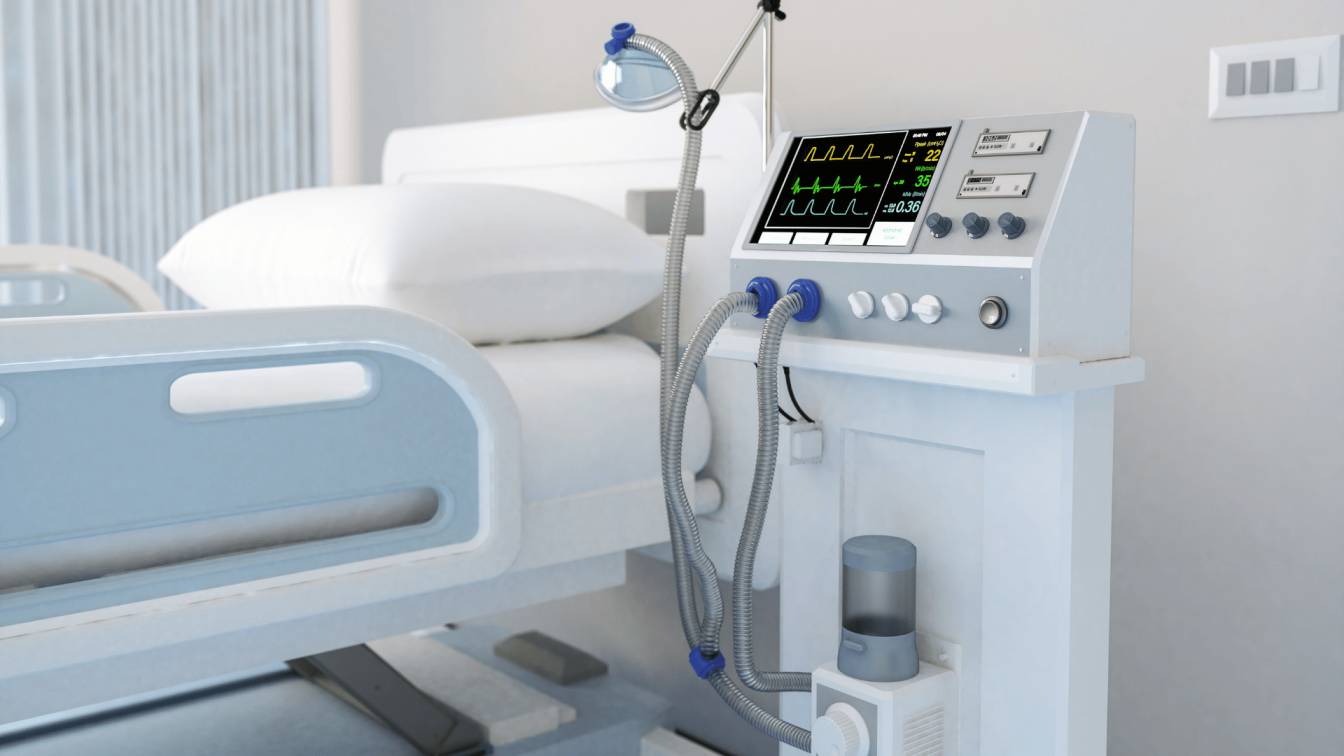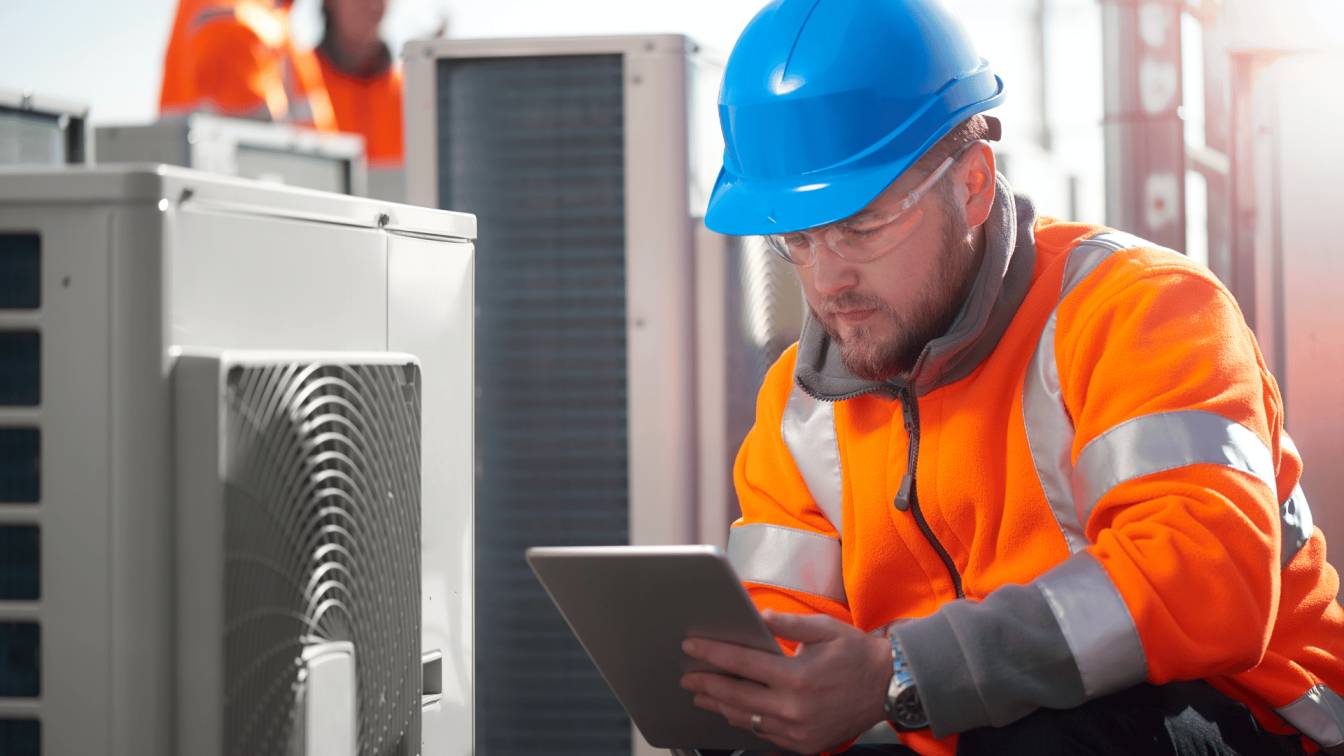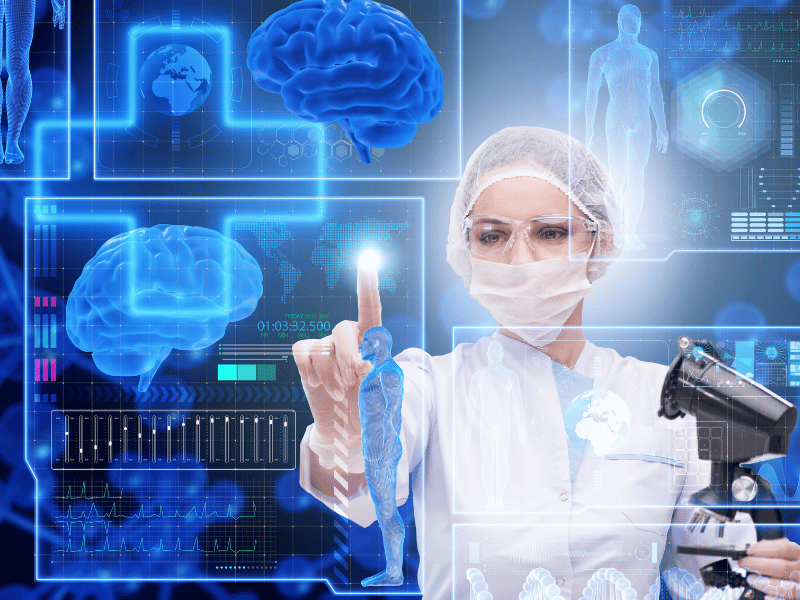In healthcare, your top priority is life safety and the protection of critical assets. Imagine you're a healthcare facility manager faced with an old maintenance logbook. You may wonder, "Isn't there a better way?"
Well, there is! It's called CMMS software. This digital transformation isn't just about making your life easier; it's about ensuring the safety of patients and the efficient operation of healthcare systems.
With CMMS software, you can monitor every device and system to ensure they run smoothly. This brings convenience, guarantees safe patient environments, and keeps compliance checks in order. It's a true game-changer for healthcare facilities.
How Can CMMS Software Help Healthcare Facilities?

CMMS (Computerized Maintenance Management Systems)
is the modern solution that healthcare organizations rely on for effective work order management. In today's world of modern healthcare, the traditional logbooks and siloed applications can't keep up. This is where CMMS shines as a beacon of efficiency and effectiveness.
One of the primary challenges in healthcare maintenance is human error, which can have critical consequences. CMMS solutions are designed to minimize such errors by automating and streamlining maintenance tasks, thus ensuring the highest quality of patient care.
But how exactly does CMMS software revolutionize healthcare maintenance? Let's dive in and explore its multifaceted role.
Scheduling Preventive Maintenance: Stay Ahead Of Breakdowns
In healthcare, timing is everything. CMMS software, designed for modern healthcare organizations, takes the guesswork out of maintenance scheduling by providing automated preventive maintenance schedules. It predicts when medical equipment might need attention, reducing the risk of unexpected breakdowns during critical procedures. This predictive capability is like having a crystal ball for your healthcare facility, ensuring everything runs smoothly. Imagine if you could predict machine failure before it happens. Well, that's what preventive maintenance facilitated by a reliable CMMS system does – it schedules regular checks on your critical assets so potential issues are identified early enough before causing any serious harm to patient care and regulatory compliance.
Streamlined Operations and Asset Management
Healthcare organizations, with their extensive supply chain and various healthcare equipment, are vast ecosystems. CMMS software, designed for modern healthcare, provides visibility into these assets, making managing and maintaining them a breeze. It's like having a centralized database of all your critical assets and healthcare equipment, ensuring that nothing falls through the cracks in your healthcare organization. This level of visibility streamlines operations enhances work order management, and helps maximize budgets by efficiently allocating resources where they are needed most, ultimately improving the quality of patient care.
Ensuring Regulatory Compliance
In healthcare, following the rules is a must. Hospitals and clinics have to stick to strict standards set by organizations like the Joint Commission, HIPAA, and NFPA. CMMS software, the computerized tool we use to manage things, makes it easier to follow these rules. It keeps accurate records and makes finding the information needed for audits simple. Your healthcare place is always prepared for inspections, so you don't have to worry about it.
Data Security and Accessibility
Keeping your data safe is extremely important in healthcare, and CMMS software understands this. It takes care of your maintenance data and allows authorized personnel to access it through mobile devices. This means your team can get important maintenance information from anywhere, ensuring nothing important is missed.
In today's modern healthcare world, CMMS software is more than just a tool; it's like a helpful partner. It ensures healthcare facilities run smoothly, reduces the chances of mistakes, and keeps critical assets in top shape. With CMMS, you can offer the best quality patient care while following all the rules and maximizing your budget.
The next time you're dealing with an old maintenance logbook, remember there's a better solution – CMMS software, the key to efficient healthcare maintenance.
Beyond Just Equipment: Facility Management Made Easy
But let's go beyond just machinery and tools. A robust CMMS solution also plays a crucial role in managing the entirefacility's upkeep including maintaining clean hallways and ensuring that elevators are in working order. This comprehensive approach means an improved environment for patients and staff within healthcare organizations, contributing directly to better quality patient care and ultimately enhancing patient outcomes. When CMMS software efficiently handles equipment and facility maintenance, it helps create a safer and more pleasant healthcare environment.
Challenges Faced by Healthcare Facilities in Implementing CMMS Software

Implementing Computerized Maintenance Management System (CMMS) software in healthcare facilities can be challenging in the park. Three significant challenges of CMMS implementation in healthcare facilities include data security concerns, a lack of technical expertise, and budget constraints.
Data Security Concerns
A significant concern for any healthcare facility is keeping patient information secure. When implementing new systems like CMMS software, HIPAA compliance must be ensured. But securing digital data can feel like trying to catch fish with your bare hands - slippery and elusive.
Fears about breaches often slow the adoption process as IT teams work tirelessly to safeguard sensitive health records from potential cyber threats.
Lack of Technical Expertise
You wouldn't ask a gardener to perform heart surgery, would you? In the same way, asking medical professionals without proper training to use complex CMMS tools might not yield optimal results. The need for more tech-savvy staff who understand maintenance management and system operations poses another significant hurdle when adopting these systems.
This gap could lead hospitals on an endless goose chase for skilled workers or require additional resources for extensive staff training sessions.
Budget Constraints
Imagine being asked to build a castle but given only enough bricks for a shack – that's how budget limitations feel. High costs associated with purchasing licenses and maintaining these systems are prohibitive factors, too, especially for small-scale facilities running on tight budgets.
Sometimes, this forces them to prioritize other immediate needs over the long-term benefits that a CMMS software can provide.
Best Practices for Implementing CMMS Software in Healthcare Facilities

When implementing CMMS software into healthcare facilities, a clear plan is crucial. Let's talk about four essential steps.
Create an Implementation Plan with Measurable Goals
A goal-oriented approach will drive success. You need specific, measurable goals that align with your facility's needs and expectations. These include improving equipment reliability or increasing maintenance efficiency.
Prioritize Training
Your team should know how to use the software effectively. This means proper training is paramount. Please make sure everyone involved understands the system and its benefits fully.
Use Secure Cloud-Based Solutions
Data security must be noticed in healthcare settings where patient information is at stake. Using secure cloud-based solutions protects data and lets you access real-time updates anywhere.
Integrate With Existing Systems for Seamless Operation
To avoid operational hiccups, integrate your CMMS solution seamlessly into existing systems like EHRs (Electronic Health Records). A smooth transition leads to fewer disruptions and more effective use of resources.
The key lies within meticulous planning paired with strategic execution. It may seem daunting initially, but trust me, these best practices make implementation much smoother - even fun.
Ways CMMS Software Ensures a Healthy Healthcare Environment

CMMS software plays an integral role in maintaining the health of healthcare environments. One significant way it does this is by boosting equipment reliability.
This software helps track and schedule regular maintenance tasks so crucial medical devices don't break down when needed. For instance, imagine a scenario where a life-saving ventilator malfunctions due to poor maintenance - such situations can be avoided using CMMS software.
Beyond ensuring equipment reliability, CMMS systems also help improve safety standards within healthcare facilities. They do this by providing reminders for routine inspections and facilitating easy access to safety guidelines and procedures. According to NCBI, implementing these measures reduces the risk of errors caused by faulty or poorly maintained equipment.
CMMS keeps track of scheduled checks on fire alarms and extinguishers, ensuring patients are safe during emergencies.
The system alerts staff if there's an issue with HVAC systems, ensuring optimal room temperatures for patient comfort and recovery.
A quick response time is possible as all repair requests get immediately directed to appropriate technicians, reducing any delays in fixing problems.
Data security, another significant concern within healthcare settings, is something quality CMMS platforms handle well. With secure data storage capabilities coupled with strict user-access controls, you can rest assured knowing your facility's sensitive information remains protected against breaches at all times. PubMed research shows enhanced data protection strategies reduce data theft and loss risks, contributing to a healthier environment overall.
With CMMS software, healthcare facilities can focus more on patient care while keeping equipment maintenance, adherence to safety standards, and data security in capable hands. Thus creating an overall healthier environment for both patients and staff alike.
| CMMS software revolutionizes healthcare settings. It increases equipment dependability, ensuring crucial medical tools are always primed for action. Plus, it bolsters safety norms by reminding the team about inspections and giving them easy access to guidelines. The cherry on top? Faster repair responses and unbeatable data protection measures. All this lets healthcare facilities zero in on what's truly important - patient care. |
The benefits of CMMS software in healthcare facilities

Healthcare facilities face unique challenges when it comes to maintaining their equipment and infrastructure. From ensuring the reliability of life-saving medical devices to keeping track of routine maintenance tasks, there's no room for error. That's where Computerized Maintenance Management System (CMMS) software steps in.
A key benefit is how CMMS helps streamline operations. It automates manual processes, liberating personnel and reducing the likelihood of mistakes. This tool can easily manage tasks like scheduling regular equipment checks or tracking inventory levels.
Optimizing Resources
Besides streamlining operations, CMMS also lets healthcare providers optimize their resources better. The system allows managers to allocate labor more efficiently by assigning tasks based on skill level and availability.
In addition, it gives valuable insights into costs associated with repairs versus replacements - an essential factor considering tight budget constraints often present within the industry.
Enhancing Equipment Reliability
Maintaining reliable equipment is crucial in healthcare settings because lives depend on it functioning appropriately. Here, too, CMMS plays an essential role.
This robust tool keeps detailed records about each piece of machinery, including its repair history and lifespan, making planning preventive maintenance more effortless than ever before – thus significantly reducing downtime due to unexpected breakdowns.
Remember that CMMS software isn't just a luxury; it's necessary in today's healthcare environment. Its ability to streamline operations, optimize resources, and enhance equipment reliability makes it an invaluable tool for every healthcare facility.
Ensuring Compliance with Industry Standards Using CMMS Software
Staying on top of industry standards can be challenging, but CMMS software simplifies it. But here's the kicker: CMMS software makes it as easy as pie. It doesn't just let your healthcare facility meet regulations; it helps you stay ahead of them.
A study published in the Journal of Healthcare Engineering found that implementing CMMS software helped hospitals improve compliance by 30%. This isn't small potatoes.
The secret sauce? Transparency and traceability.
Transparency: No More Hide-and-Seek with Data
All crucial information is stored centrally and accessible anytime, anywhere. This means less scrambling during audits or inspections because everything's at your fingertips. Remember those sleepless nights before an audit? Kiss them goodbye.
Traceability: A Clear Map of Your Maintenance History
Beyond just keeping track of maintenance tasks, CMMS offers complete visibility into equipment history - like breadcrumbs leading back through each asset's life cycle. If something goes wrong (knock on wood), tracing back steps becomes a walk in the park instead of a wild goose chase.
Friendly Reminders for Preventive Measures
Sure, forgetting Aunt Mabel's birthday might earn you some side-eye at family gatherings. But missing scheduled maintenance could have far more severe consequences – we're talking about patient safety. Luckily, most CMMS platforms come equipped with automatic alerts, ensuring these vital checks never slip through the cracks.
The right tools make all the difference - think spatula vs. fork when flipping pancakes. CMMS is the right tool for healthcare facilities to keep on top of industry standards and ensure a healthy, safe environment. Now, isn't that a breath of fresh air?
Tracking Maintenance History with CMMS Software
A key advantage of using Computerized Maintenance Management System (CMMS) software in healthcare facilities is its ability to track maintenance history accurately. This function lets you ensure all equipment operates optimally, ensuring the environment stays healthy.
Using a CMMS like MicroMain is like having an incredibly detailed diary for each piece of your facility's equipment. You can easily see the last time a machine was serviced and plan future preventive measures accordingly.
The Power of Detailed Records
Detailed records are more than just entries on a spreadsheet - they're lifelines that connect past work orders, issues fixed, parts used, and labor costs together. With these data points at your fingertips, CMMS software makes it easier to anticipate potential problems before they become full-blown crises.
But let's be clear: It isn't magic; it needs consistent input from staff members who carry out regular inspections and routine maintenance tasks. Just as doctors rely on patient histories for accurate diagnoses, engineers also need comprehensive asset histories for effective repairs.
Predictive Maintenance & Cost Savings
An up-to-date maintenance history lets us shift gears from reactive approaches toward predictive ones – instead of waiting for something to break down before fixing it. By predicting what might go wrong next based on previous events logged within the system, we can act preemptively and avoid unnecessary downtime or even catastrophic failures, which could impact patients' health negatively.
This also helps control budgets better by reducing unexpected repair expenses.
Better planning leads not only to smoother operations but also to increased equipment lifespan.
It's about mending things and preventing issues from occurring in the first instance.
This is why tracking maintenance history with CMMS software becomes crucial to ensuring a healthy healthcare environment.
Asset Management Features in CMMS Software for Healthcare Facilities

The world of healthcare is no stranger to the need for reliable asset management. Keeping everything running smoothly and safely is vital with so many critical equipment pieces. Enter Computerized Maintenance Management System (CMMS) software.
A key feature of CMMS software is its comprehensive approach to managing assets within healthcare facilities, including maintaining a detailed asset inventory. This technology doesn't just let you track your physical assets and helps with scheduling preventive maintenance tasks, monitoring repairs, and analyzing data related to equipment performance. This robust CMMS asset management capability ensures that healthcare organizations can effectively manage their equipment, ensuring optimal performance and minimizing downtime.
Scheduling Preventive Maintenance Tasks
With CMMS software, you can plan routine checks on all your medical tools and devices without missing a beat or overworking your team members' schedules, allowing users to efficiently manage maintenance tasks. The result?
No more unplanned downtime because an X-ray machine suddenly broke down during peak hours.
Tracking Repairs & Performance Analysis
Beyond scheduling tasks, CMMS allows you to log repair history and analyze trends over time — crucial steps toward improving operational efficiency.
This information gives actionable insights into which machines might need more attention or replacement due to frequent breakdowns.
Data Security Assurance
Lastly, considering how sensitive patient data is, HIPAA compliance must be considered when discussing any software in the healthcare industry.
Fortunately, CMMS providers understand this need and have incorporated robust security measures to ensure patient data remains confidential and safe from breaches.
All these features together ensure that CMMS software isn't just a tool for maintenance management but an essential partner in ensuring the smooth operation of any healthcare facility.
The Future of CMMS Software in Healthcare Maintenance

Healthcare facilities are continually evolving, and so is the role of Computerized Maintenance Management System (CMMS) software. The future points to more automation, integration, and intelligent solutions that can adapt to changing needs.
A burgeoning trend is incorporating Artificial Intelligence (AI) into CMMS software. AI algorithms integrated into CMMS software could predict equipment failures before they happen. This not only prevents costly downtime but also helps keep patients safe.
Predictive Maintenance
The trend towards predictive maintenance represents a significant leap from traditional reactive models. By predicting potential issues, we're moving away from fixing problems after they occur to preventing them altogether. It's like having your crystal ball for machine health.
Data-driven insights give us an edge by pinpointing when equipment might fail or need servicing, enabling us to create work orders for proactive maintenance. It's akin to knowing precisely when you'll need an umbrella because you have real-time weather updates at your fingertips.
Better Integration with IoT Devices
In addition, better integration with Internet of Things (IoT) devices will let healthcare facilities monitor all their systems seamlessly – imagine being able to track everything from air quality sensors to MRI machines on one platform.
This level of connectivity brings about unprecedented improvements in efficiency and patient outcomes. We're talking about the ability of hospital staff members not only to do more with less but also to improve patient outcomes.
Enhanced Data Security
Data security is a priority as we move forward, with CMMS software developers taking measures such as implementing advanced encryption and multi-factor authentication to protect sensitive information in healthcare settings. Protecting sensitive data is crucial in healthcare environments. Advanced encryption and multi-factor authentication are just some ways CMMS software developers are stepping up their game.
The days when maintenance was seen as an afterthought in healthcare facilities are long gone. With advancements like these, CMMS software is helping shape healthier futures for everyone.
| Healthcare CMMS software is leveling up, boasting new features like AI support and predictive maintenance. It's no longer just about problem-solving; it's about preventing issues. Thanks to improved IoT device compatibility, hospitals can monitor every system from a single platform. And, of course, we must recognize the vital importance of more robust data security measures. The takeaway? CMMS has moved far beyond being a mere afterthought—it. |
FAQs concerning Healthcare Maintenance: How CMMS Software Assures a Healthy Environment
How does a CMMS improve maintenance efficiency and effectiveness?
A CMMS boosts maintenance efficiency by automating scheduling, tracking tasks, reducing downtime, and providing real-time data for better decision-making.
How does CMS software help in preventive maintenance?
CMMS aids in preventive maintenance by monitoring equipment health. It alerts staff to potential issues before they turn into significant problems.
What are the benefits of a CMMS system?
The perks of using a CMMS include improved asset management, increased productivity, lower costs from fewer breakdowns, and reduced energy consumption.
How would you relate the benefits of CMMS to making a reliable preventive maintenance program?
Implementing a CMMS creates dependable preventative programs by enabling consistent monitoring, early problem detection, and scheduled upkeep work.
Conclusion
So, you've made it to the end of our exploration of healthcare maintenance and how CMMS software assures a healthy environment. Now, let's recap.
You now know that CMMS can drastically improve safety standards. It reduces medical errors caused by equipment breakdowns or malfunctions.
We also discussed challenges in implementing this game-changer - data security concerns, lack of technical expertise, and budget constraints. But don't worry; we covered best practices, too!
A clear plan with measurable goals is essential. So is proper training for your team. Remember: use secure cloud-based CMMS solutions and integrate them with existing systems for seamless operation.
The future looks bright as more facilities adopt these digital tools to ensure patient safety and industry compliance while efficiently tracking maintenance history and managing assets.
 For immediate assistance, please call us at (512) 328-3235
For immediate assistance, please call us at (512) 328-3235



